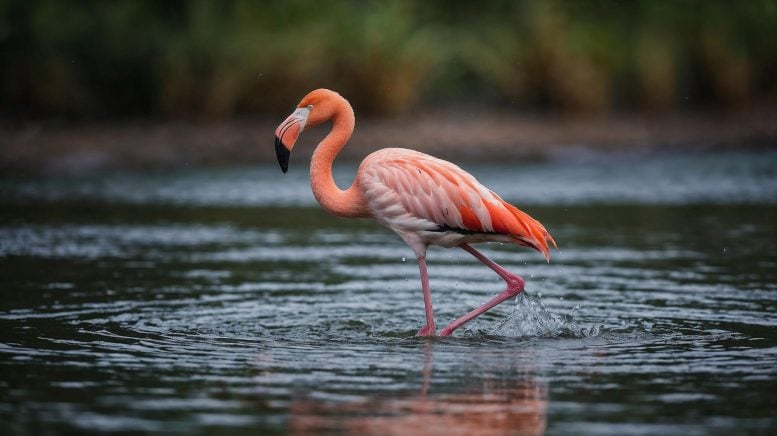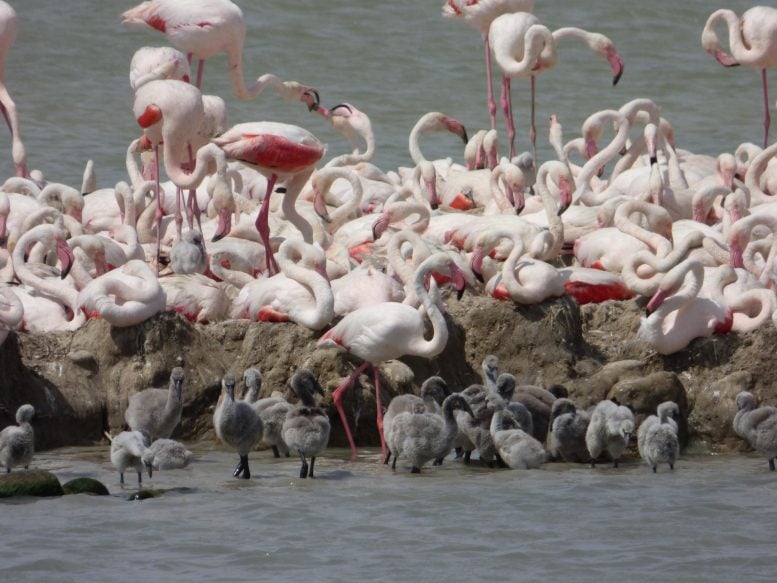
A long-term study of flamingos has revealed an unexpected link between migration and aging.
Is aging truly unavoidable? While nearly all living creatures experience it, some species show a much slower pace of decline than others. A recent study in the Proceedings of the National Academy of Science raises an intriguing idea: could migration influence how quickly we grow old?
To investigate this, researchers studied the pink flamingo (Phoenicopterus roseus), an elegant migratory bird strongly associated with the Camargue wetlands in southern France. Data from a long-term flamingo monitoring program, carried out for more than four decades by the Tour du Valat research institute, revealed something unexpected. Flamingos that migrate age more slowly than those that stay in one place.
Within the species, two strategies exist. Some birds remain in the Camargue throughout their lives (they are known as ‘residents’), while others undertake annual journeys around the Mediterranean (these are the ‘migrants’). Early in adulthood, resident birds appear to have the advantage. Settled comfortably in the coastal lagoons during winter, they achieve higher survival and reproduction rates compared to their migrating counterparts.
Yet this early success comes at a price. As residents grow older, their decline is sharper. They show about 40% faster aging, with reproduction falling off more quickly and mortality risk rising sooner than in migrants. In contrast, migratory flamingos, which spend winters in Italy, Spain, or North Africa, face steep costs early on in the form of greater mortality and reduced reproduction. However, those that survive appear to gain long-term benefits, experiencing slower aging as they reach advanced ages.
Thus, the onset of the aging process occurs earlier in residents (20.4 years on average) than in migrants (21.9 years).
Migration: An Animal Behavior That Influences Aging
This study shows that seasonal migration – a behavior exhibited by billions of animals – can influence the rate of aging. In flamingos, deciding not to migrate offers advantages early in life that are associated with accelerated senescence at an advanced age.
“This is probably linked to a compromise between performance when young and health in old age,” explains Sébastien Roques, researcher at the CNRS and co-author of the study. “Residents live intensely at first, but pay for this pace later on. Migrants, on the other hand, seem to age more slowly.”

With their long lifespan (some live to be over 50 years old!) and behavioral diversity, flamingos are more than just an iconic animal of the Camargue. They also provide an ideal model for understanding aging in animals.
“That’s the whole point of having continued this study over the long term. Initiated in 1977 in the Camargue by tagging flamingos with rings that can be read from a distance with a telescope, this program still allows us to observe flamingos tagged that year,” explain Arnaud Béchet and Jocelyn Champagnon, research directors at the Tour du Valat and co-authors of the study. “This is a unique dataset that is proving invaluable for understanding the mechanisms of aging in animal populations.”
Unravelling the secrets of aging, a scientific and existential quest
This discovery is part of an exciting field of research: senescence, or biological aging.
Hugo Cayuela, one of the study’s co-authors and a researcher at the University of Oxford, comments: “Understanding the causes of changes in the rate of aging is a problem that has obsessed researchers and polymath philosophers since ancient times.”
He continues, “For a long time, we thought that these variations occurred mainly between species. But recently, our perception of the problem has changed. We are accumulating evidence showing that, within the same species, individuals often do not age at the same rate due to genetic, behavioral, and environmental variations.”
By studying how certain animals are born, reproduce, and die, scientists hope to unlock the secrets of aging… In doing so, they are attempting to answer one of the most existential and central questions in biology: why and how do we die?
Reference: “Migration shapes senescence in a long-lived bird” by Hugo Cayuela, Sébastien Roques, Antoine Arnaud, Christophe Germain, Arnaud Béchet and Jocelyn Champagnon, 25 August 2025, Proceedings of the National Academy of Sciences.
DOI: 10.1073/pnas.2422882122
Never miss a breakthrough: Join the SciTechDaily newsletter.
1 Comment
So, do we eat flamingos now?